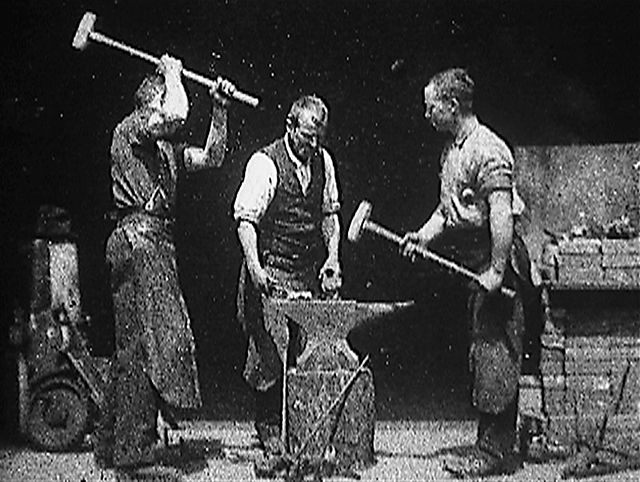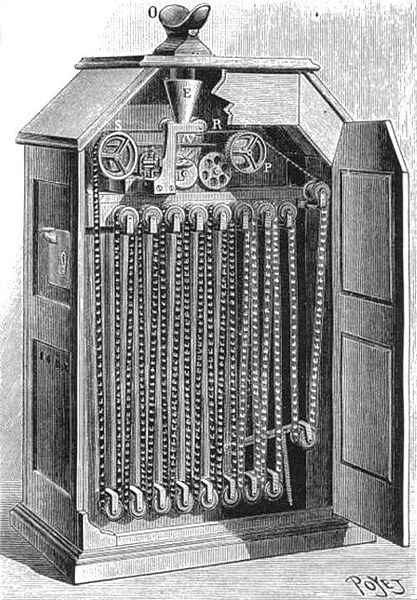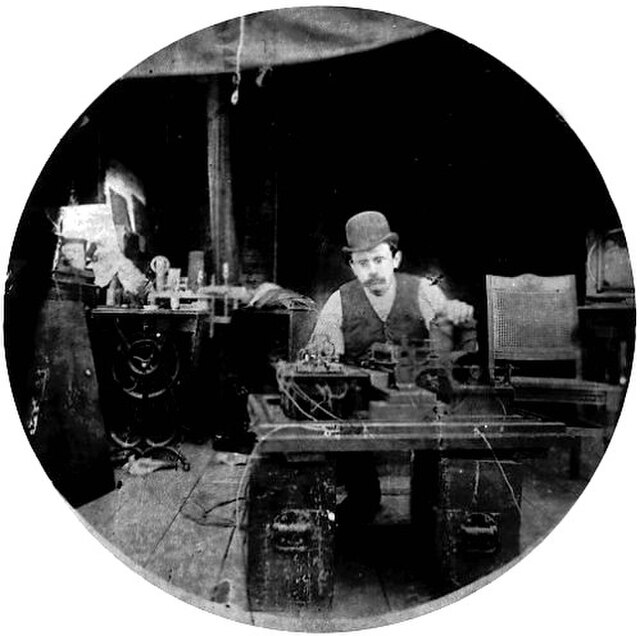Blacksmith Scene is an 1893 American short black-and-white silent film directed by William K.L. Dickson, the Scottish-French inventor who, while under the employ of Thomas Edison, developed one of the first fully functional motion picture cameras. It is historically significant as the first Kinetoscope film shown in public exhibition on May 9, 1893, and is the earliest known example of actors performing a role in a film. It was also the first U.S. motion picture film ever copyrighted that same year. 102 years later, in 1995, Blacksmithing Scene was selected for preservation in the United States National Film Registry by the Library of Congress as being "culturally, historically, or aesthetically significant". It is the second-oldest film included in the Registry, after Newark Athlete (1891).
Screencap from Blacksmithing Scene
The Kinetoscope is an early motion picture exhibition device, designed for films to be viewed by one person at a time through a peephole viewer window. The Kinetoscope was not a movie projector, but it introduced the basic approach that would become the standard for all cinematic projection before the advent of video: it created the illusion of movement by conveying a strip of perforated film bearing sequential images over a light source with a high-speed shutter. First described in conceptual terms by U.S. inventor Thomas Edison in 1888, it was largely developed by his employee William Kennedy Laurie Dickson between 1889 and 1892. Dickson and his team at the Edison lab in New Jersey also devised the Kinetograph, an innovative motion picture camera with rapid intermittent, or stop-and-go, film movement, to photograph movies for in-house experiments and, eventually, commercial Kinetoscope presentations.
Interior view of Kinetoscope with peephole viewer at top of cabinet
Sheet of images from one of the three Monkeyshines films (c. 1889–90) produced as tests of an early version of the Kinetoscope
An acre in size, Edison's exhibit at the Exposition Universelle included an entire electrical power station.
Charles Kayser of the Edison lab seated behind the Kinetograph. Portability was not among the camera's virtues.





